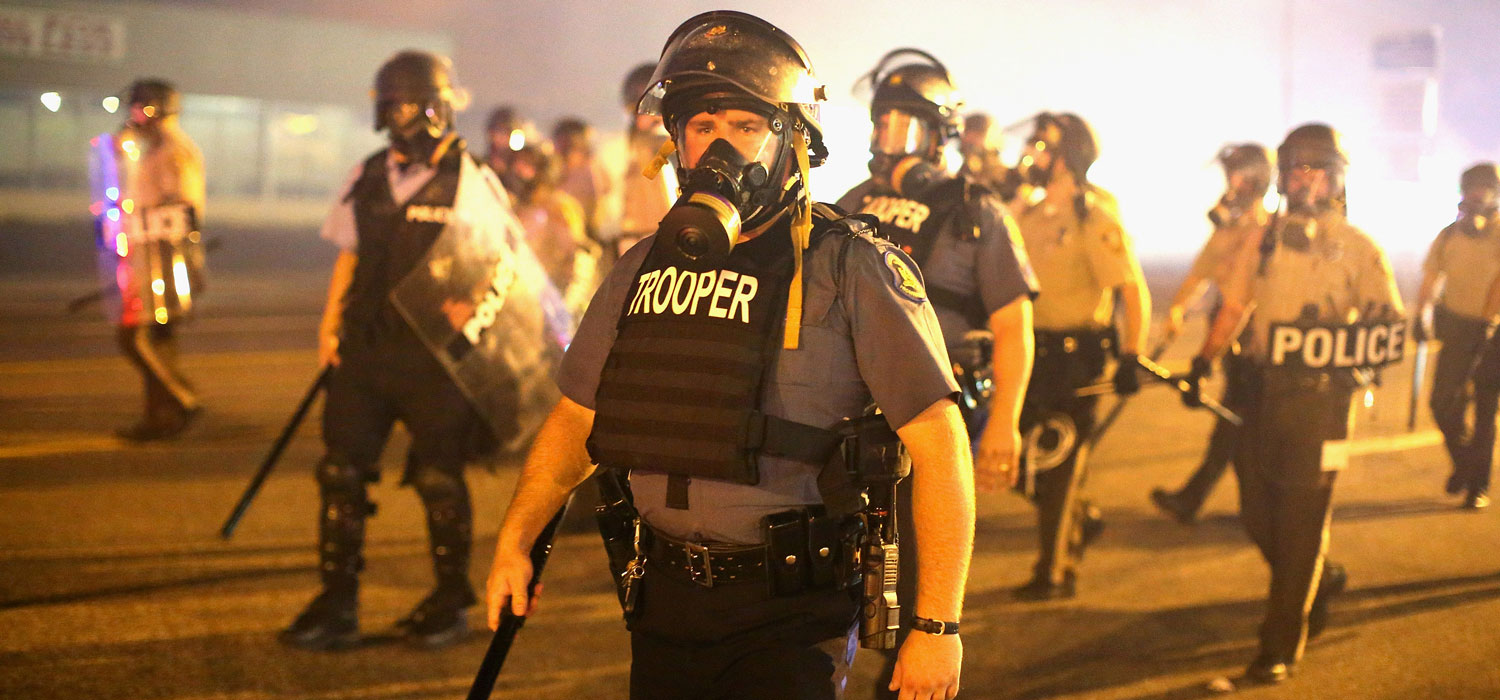
<p>Police advance through a cloud of tear gas toward demonstrators protesting the killing of teenager Michael Brown on August 17, 2014 in Ferguson, Missouri. Photo by Scott Olson/Getty Images.</p>
In August 2014, protests in the wake of 18-year-old Michael Brown’s death at the hands of a white police officer were met with tanks, assault weapons, and police in combat gear. The images of Ferguson, Missouri, looking more like a war zone than a small town sparked a national conversation about police militarization.
Does law enforcement need military gear to ensure public safety? Or does providing these supplies and weapons lead to more incidents of excessive force?
To answer these questions, we need more information. But beyond anecdotal evidence, we do not know the effects or the extent of greater police militarization. We do not have access to data on the scope of police militarization or how the items or funds acquired by law enforcement agencies are being employed.
One program that facilitates police militarization is the Pentagon’s 1033 program, where local law enforcement agencies can acquire military surplus equipment at little cost. The Pentagon has a website that provides data on all acquisitions made by local law enforcement agencies. Although this program has been in existence since 1989, law enforcement agencies have only recently begun to take advantage of the available surplus. Military surplus acquisitions spiked in 2013, with 320,704 purchases, and nearly doubled in 2016.

This is just one program. Other programs through the US Departments of Defense, Homeland Security, and Justice facilitate police militarization. Data on these programs are not as readily available, though, so we do not have a complete picture of the size of this trend.
Now is an important time to investigate this practice. In August, the Trump administration rolled back Obama-era bans on acquiring specific types of military surplus. In his statement justifying the removal of these restrictions, Attorney General Jeff Sessions touted studies showing that police militarization was a cost-effective way to lower crime.
These studies used data from the 1033 program to estimate the impact on crime, but they did not give a reasonable explanation of how acquiring military surplus might lead to lower crime. Grenade launchers and bayonets are available to agencies through the 1033 program. How will these items be used, and how will their use lower crime? Research has not provided that answer, but we do know that crime was already on a downward trend before large-scale acquisitions through the 1033 program beginning in 2006 and spiking in 2013.

Police stand watch as demonstrators protest the shooting death of teenager Michael Brown on August 13, 2014 in Ferguson, Missouri. Photo by Scott Olson/Getty Images.
Although the effect of police militarization on crime is an important question, analysis should go further. First, we should explore the effects of the lack of oversight on the acquisition of surplus military items through the 1033 program. A recent Government Accountability Office (GAO) study found that the safeguards in place to ensure proper and secure distribution of military items were not followed. In fact, the GAO was able to create a fictitious agency and acquire $1.2 million worth of items. Policymakers should ensure that protocols and protections are being followed.
Second, we should examine whether militarization is blurring the mission of police to protect and serve with the mission of the armed forces to engage enemy targets on the ground. If police officers behave like they are members of the armed forces, this might erode trust and diminish relations between law enforcement and the communities they serve.
It’s vital that police chiefs and community members learn whether police militarization leads to more excessive use of force based on research evidence. Providing comprehensive analyses on police militarization can enable law enforcement to learn if unintended consequences of such programs exist and, if so, address excessive use of force to improve community trust.
Let’s build a future where everyone, everywhere has the opportunity and power to thrive
Urban is more determined than ever to partner with changemakers to unlock opportunities that give people across the country a fair shot at reaching their fullest potential. Invest in Urban to power this type of work.